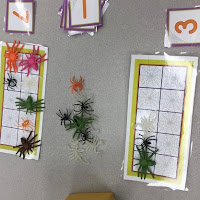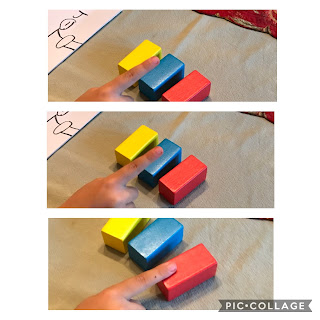It’s hard to make a plan these days for traditions like pumpkin picking! Just getting through each day is a lot, but if you’re thinking about it .... Some schools have arranged for farms to come by, some are doing virtual visits, some are coming up with other creative ideas! If your class is hybrid, it’s time-challenging to do anything together, but teachers are making it work, as best as they can :)
Having the whole class contribute to a project is one way to build community amongst the various sections of the class. In the past, when challenged by schedules or transportation/budget issues, we made our own pumpkin patch on the school property. This might work for this crazy year, too!
Ask families and community members to contribute any item(s) they are able ... hay bales, corn stalks, scarecrow decorations, milk crates, clothing for a scarecrow, etc. They could drop it off in a specified area outdoors, so some may come before school, some after school, and some at drop off or pickup times. Put all the pieces together and let the children come up with a plan - and execute it. Since we had a few classes participating in ours, it was done bit by bit, which would work this year, if cohorts/remote is your model.
Groups could also make a giant leaf pile and use it to stuff a scarecrow’s body, so he could sit-up :) Add a pumpkin or plastic jack-o-lantern for a head and think about a silly hat for your guy! Our kiddos had so much fun doing this, that we dumped him out and started over with the next group :) Why not even make more, if you get more clothes?
Of course, our scarecrow needed a name, so that became another task ... coming up with and writing down suggestions, and reviewing them all to vote for our favorite! Spelling, writing, charting results ... all kinds of skills there!
Our pumpkin patch became a place to read stories, observe nature, find natural treasures, and, ultimately, find a small pumpkin on Halloween. One class decided to supply their own, bringing a small pumpkin to share in the patch, while another class chipped in and got minis and painted them up as an activity after “picking” them outdoors. A hybrid class could pick a few with each cohort, and have remote learners stop by after hours for their own, then use markers or paints to decorate them all together, but apart :)
Tip: Make sure that a volunteer only puts out the pumpkins as needed, so no friendly neighborhood critters grab them for snacks :)
Have fun!
 Kiddos will spend time making castles, houses, roads, furniture...all kinds of things! They try out things like balance and structure, learning and adapting through their own mistakes, developing perseverance and design skills along the way :)
Kiddos will spend time making castles, houses, roads, furniture...all kinds of things! They try out things like balance and structure, learning and adapting through their own mistakes, developing perseverance and design skills along the way :)  Another way to use blocks is to set them up as a solo (or paired) activity to copy a design. Students will use analytical and visual skills in order to choose the blocks that are pictured, and put them together to make a copy of a particular structure.
Another way to use blocks is to set them up as a solo (or paired) activity to copy a design. Students will use analytical and visual skills in order to choose the blocks that are pictured, and put them together to make a copy of a particular structure. 























